
All About Amazons

Amazons
Amazon parrots are native to areas in Mexico and Central and South America. Deforestation of their natural habitat and capture for the pet trade have greatly reduced the numbers of these once common species. Most free-ranging species are considered threatened or endangered and efforts to protect these birds have resulted in a ban on importation for pet purposes in the United States. High quality companion birds are available from breeders. Amazons have extroverted personalities and entertaining antics, but these birds don’t always enjoy being touched or “cuddled.” Some may be considered hyperactive or short-tempered. They generally are not good pets around children.
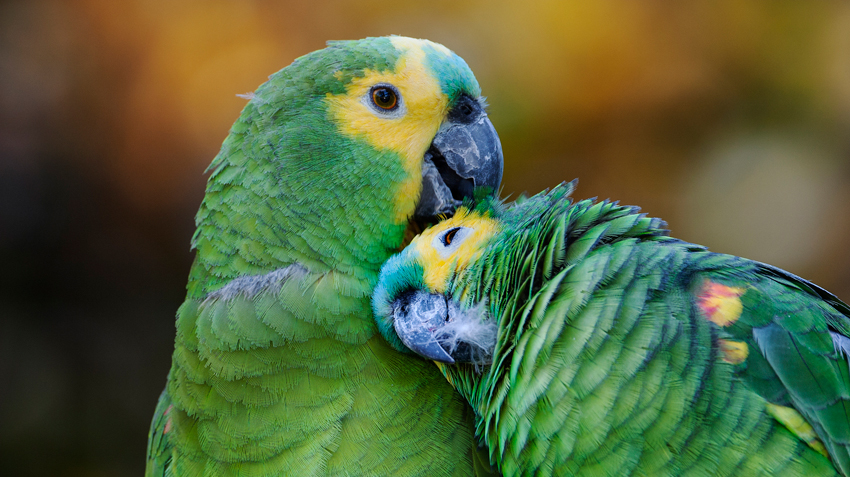

What to Expect from Your Amazon Parrot:
Amazon parrots are best known for their excellent ability to mimic. Double Yellow-headed, Yellow-naped and Blue-fronted Amazons seem to have the best potential for talking, laughing, coughing or even imitating a baby’s cry – perhaps males more than females. Other species may whistle or scream. All Amazons tend to form a bond with a specific individual, which may turn into aggression toward other family members, especially during the breeding season. Although Mealy and Orange-winged Amazons are not as lively and talkative as other species, they are generally regarded as more gentle and affectionate. Hand-raised Blue-fronted Amazons generally make good companions.
What Do Amazons Do All Day?
Amazons are playful and easily amused with simple toys. Because they love to chew, toys must be free of toxic metals, hooks, sharp objects or small, easily consumed components. Providing chew toys or fresh-cut branches from non-toxic, pesticide-free trees may prevent some Amazons from destroying their perches as quickly. Check with your veterinarian for recommendations on locally available safe trees. Amazons tend to be the most vocal in the early morning and late afternoon.
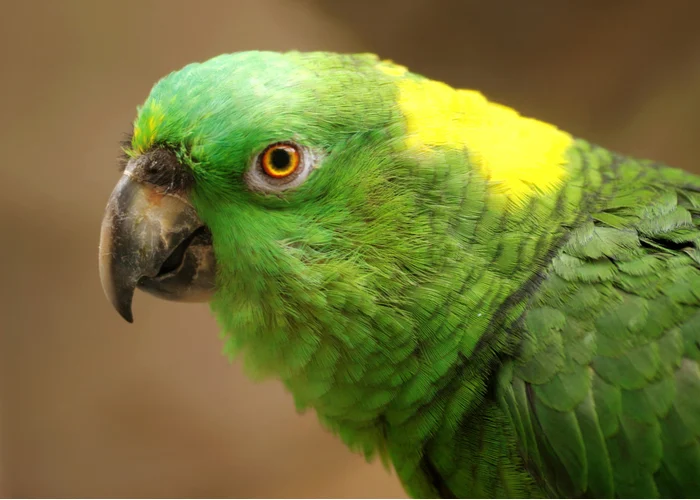
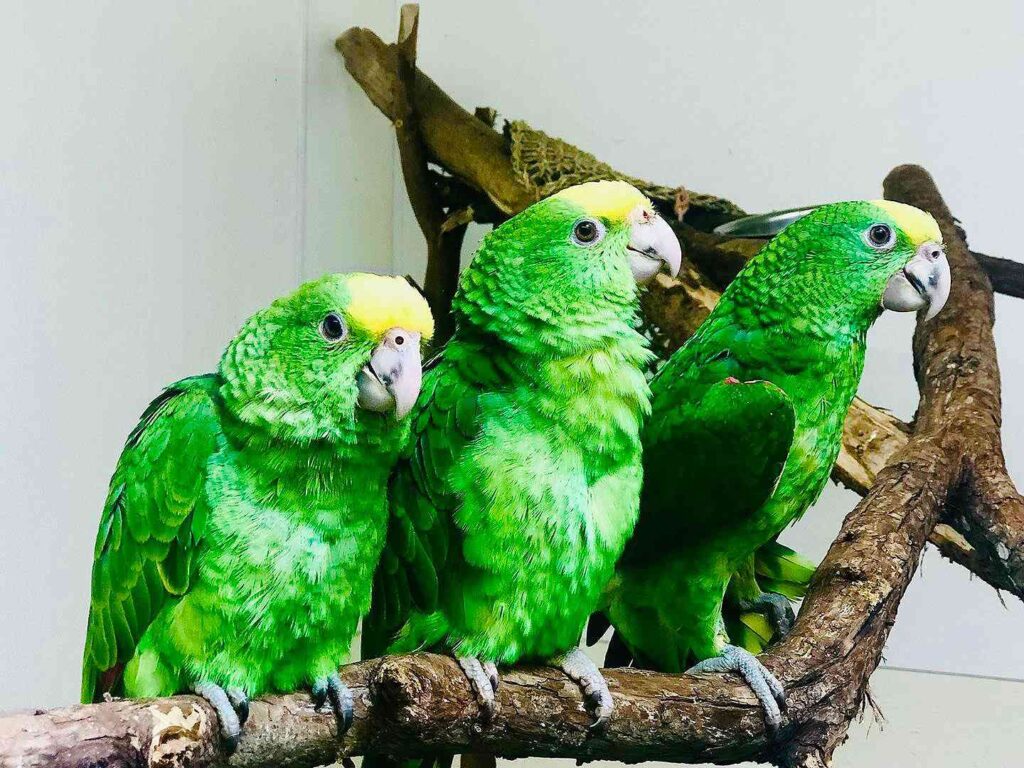
Is Your Amazon a Male or a Female?
In most Amazon species it is difficult to reliably distinguish a male from a female based on physical characteristics; therefore, endoscopy or laboratory methods must be used for sex determination in breeding facilities. Amazons are somewhat of a challenge to breed but the offspring are easy to hand raise.
What Your Vet Looks For in a Healthy Amazon
Dry, Open Nares
Smooth Beak
Clear, Bright Eyes (No Discharge)
Alert, Erect Posture
Smooth, Bright Feathers Without Color Breaks, Transparency or Ragged
Edges
Body Free of Lumps and Bumps
Even, Reptilian Pattern on the Feet and Nails of Appropriate Length
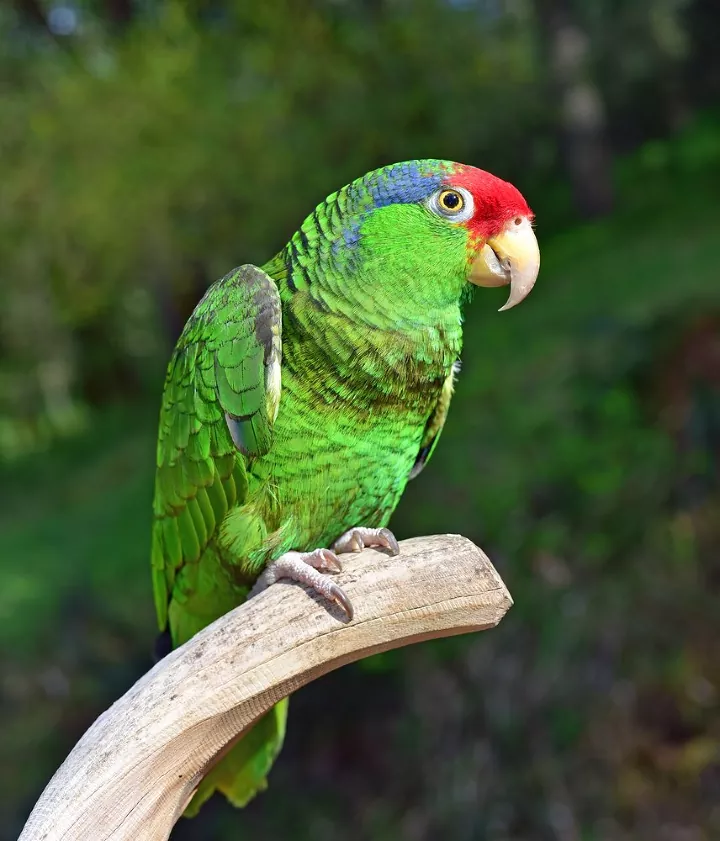

Are Amazons Tame?
Young, hand-raised Amazons adapt readily to new surroundings and handling procedures. They should be exposed early in life to novel situations (car travel, hospital visits, multiple visitors in the household, other household pets) so that they are well adjusted to these events. Discipline, leadership, patience, hooding (covering the head), a sense of ritual and the offering of rewards are necessary to modify the behavior of Amazons. Even then, they are not completely trustworthy and may bite for no apparent reason, especially after they reach sexual maturity.
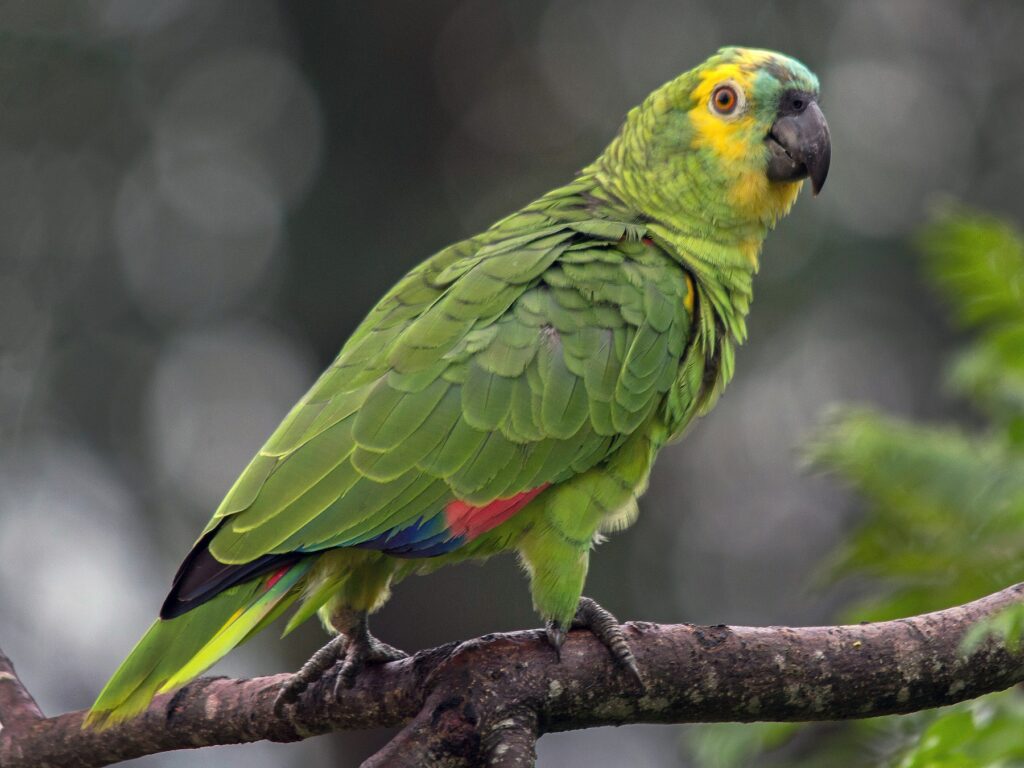
How to Identify Your Bird
Two methods used to permanently mark companion birds for identification purposes are tattoos and microchips (both are injected under the skin). Individually number leg bands are not reliable for identification. Every bird has a unique scale pattern on the feet. Photographs of the feet (updated periodically as the bird ages) can be maintained in the bird’s record to confirm its identity and to prevent fraud that can occur with other techniques.
Housing for your Amazon should:
be as large as possible. be clean, secure, safe and easy to service. be constructed of durable, nontoxic material (avoid zinc). contain variablesized perches made of clean, nontoxic, pesticide-free tree branches. have food and water containers placed at opposite ends of the enclosure. avoid having perches located directly over food containers. contain toys and accessories that are moved around occasionally to prevent boredom and aggression. offer occasional opportunity
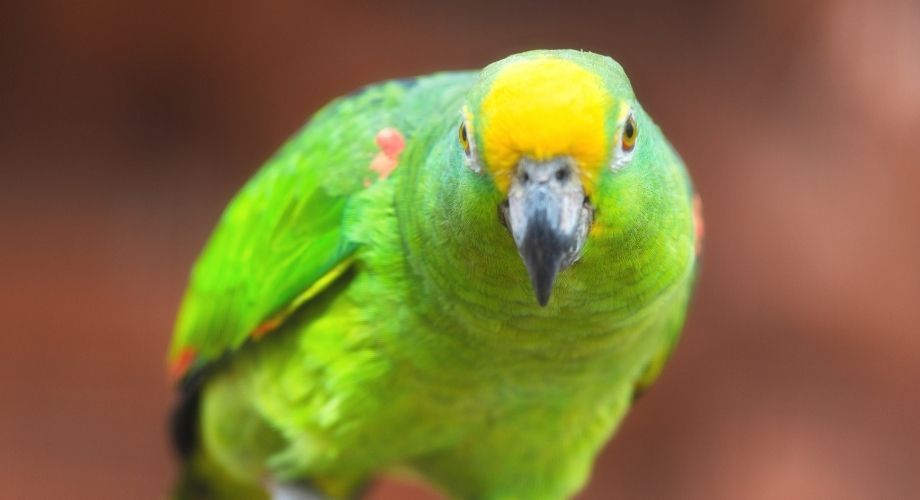
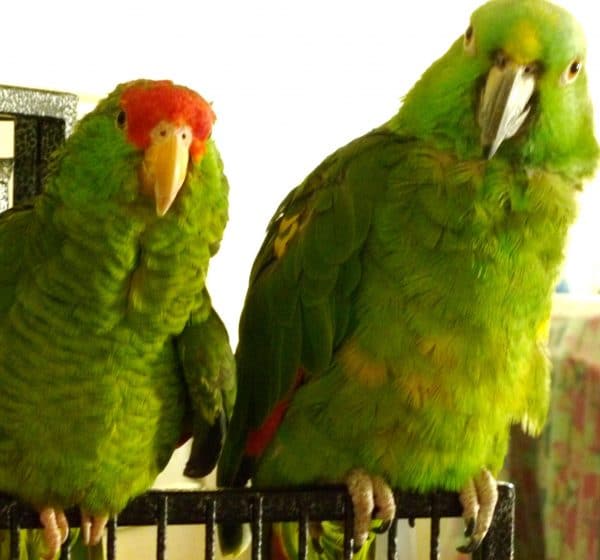
Parrots are very curious and will investigate anything new in their environment. That is why it is important to prevent their access to:
ceiling fans, hot cooking oil, Teflon-coated items (overheated), leg chains, sandpaper-covered perches, tobacco and cigarette smoke, chocolate, avocado, salt, alcohol, toxic houseplants, pesticides, toxic fumes, easily dismantled toys, dogs, cats, and young children, cedar, redwood and pressure-treated wood shavings, sources of lead or zinc.
Most Common Problems with Amazons Greys
Behavior problems.
Biting, screaming and Feather picking
Respiratory diseases
Bacterial, viral and fungal infections
Calcium deficiency syndrome
Neuropathic gastric dilatation
Vitamin A (beta carotene) deficiency
Toxicities
Chlamydia
Tumors
Psittacine beak and feather disease virus
Many common disease conditions in African Grey Parrots are the result of malnutrition. Visiting your avian veterinarian for routine health checks will help prevent many of the above diseases and support you in having a long, satisfying relationship with your African Grey Parrot.

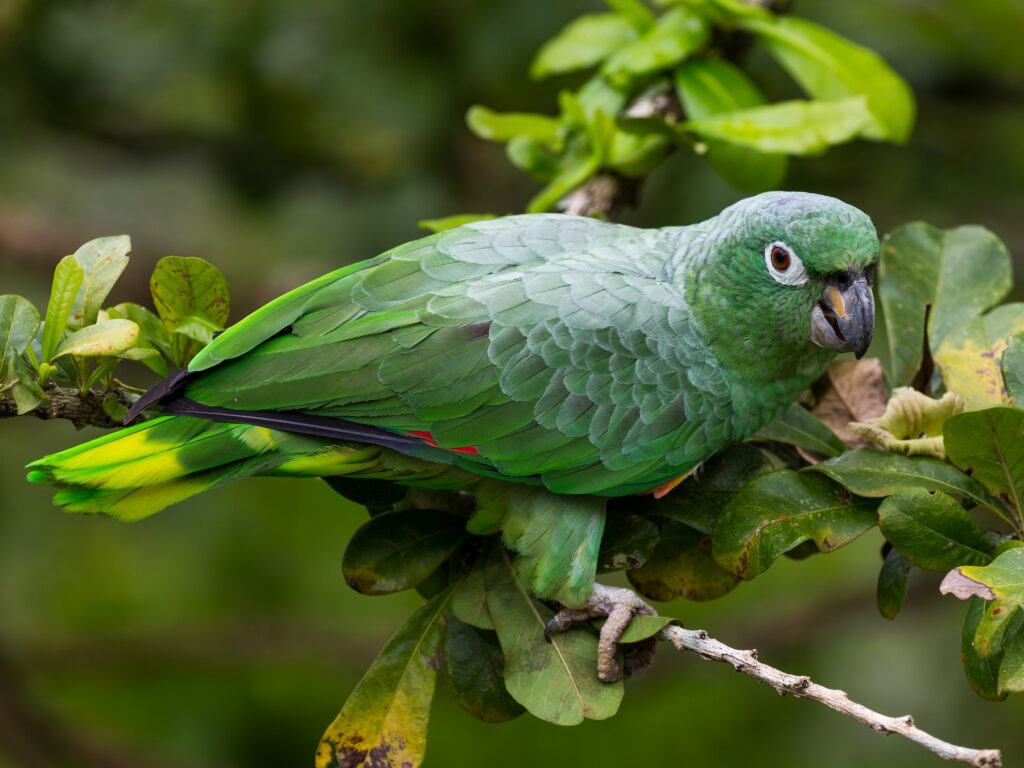
How to Keep Your Amazon Healthy, Happy and Safe!
Give lots of attention and leadership training. Feed a fresh, high quality, toxin-free, formulated diet with daily supplementation of chopped vegetables and fruit according to manufacturer’s recommendations. Grit is probably not necessary with modern captive diets. Provide clean, fresh uncontaminated water (try using water bottles). Remove and replace food and water containers twice daily to maximize activity in a healthy bird.
Provide an occasional opportunity for bath, shower, or misting (at least weekly). Avoid spraying house with insecticides. Housing for your Amazon should: be as large as possible (minimum: 2′ x 3′ x 2′). be clean, secure, safe and easy to service. be constructed of durable, nontoxic material. contain variable-sized perches made of clean, nontoxic, pesticide-free tree branches. have food and water containers placed at opposite ends of the enclosure. Avoid having perches located directly over food containers. offer occasional protected outdoor exposure to fresh air, sunlight and exercise. Download as PDF
[save_as_pdf_pdfcrowd]

